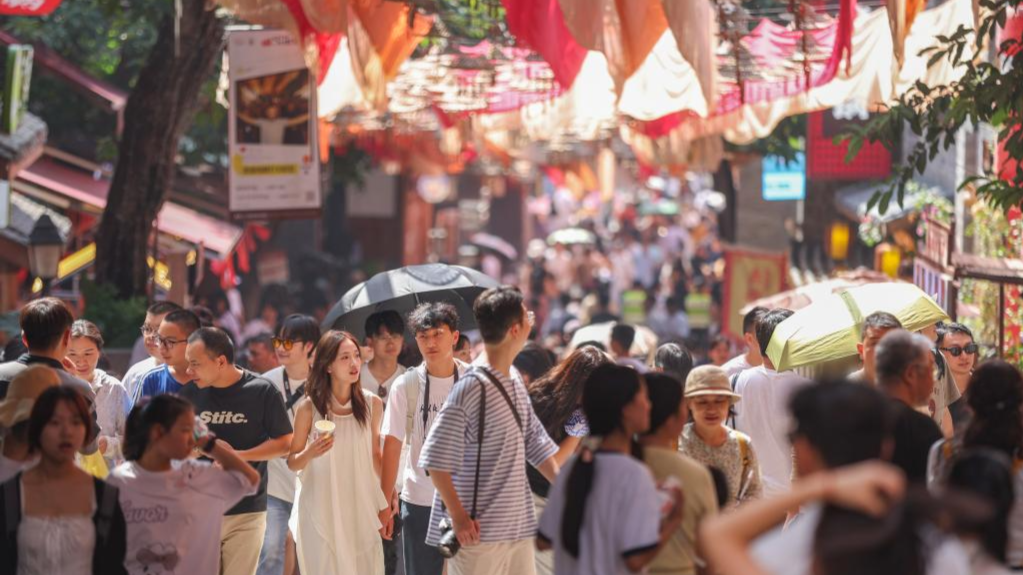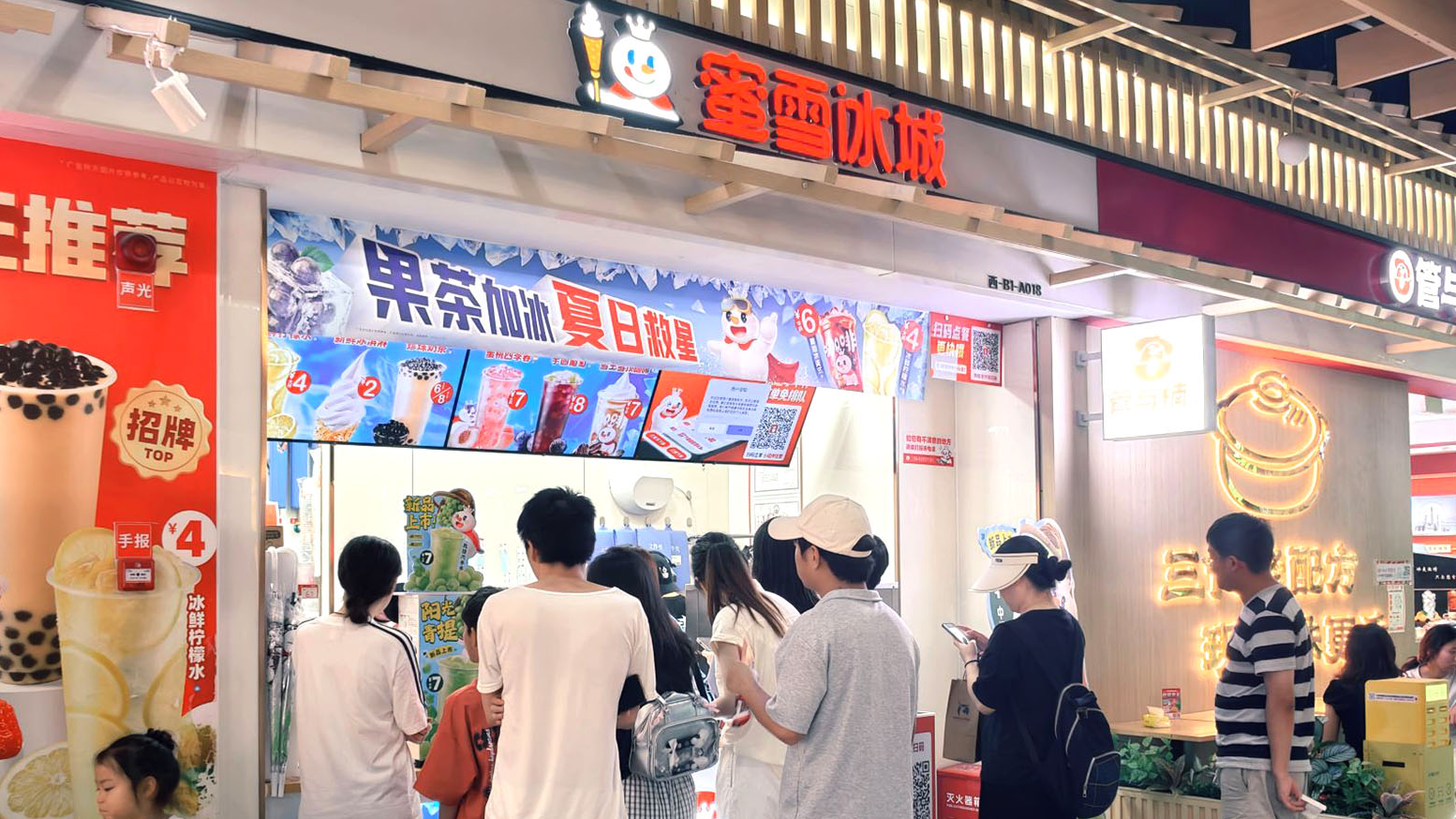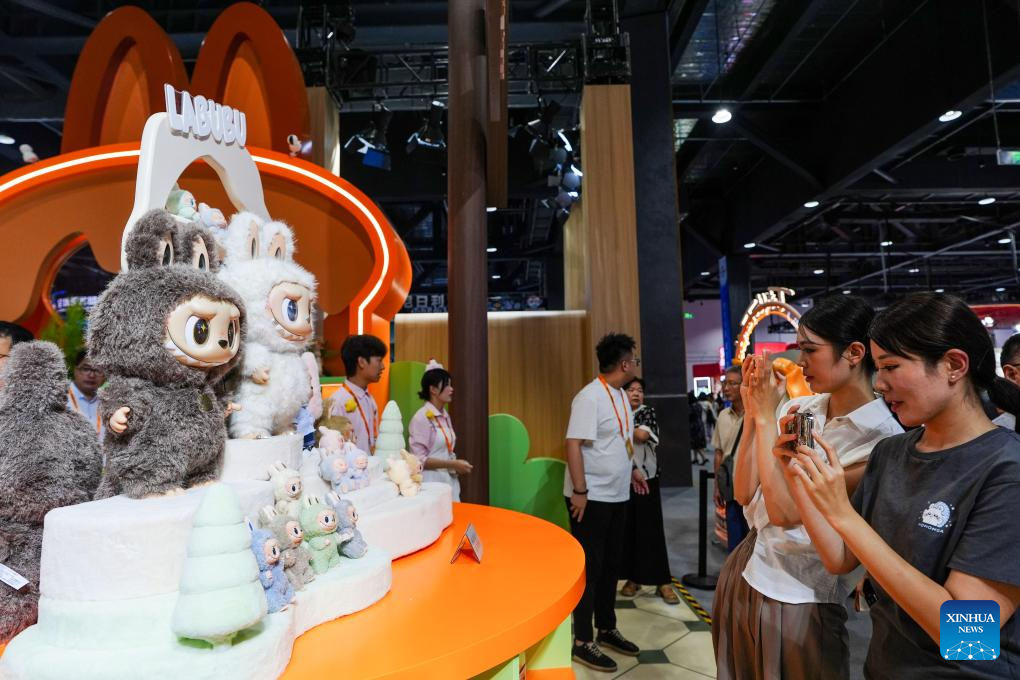
BEIJING - As China prepares the 15th Five-Year Plan (2026-2030) for its next development phase, the resilience of its consumer market, with domestic demand being tapped as a main growth engine, is under scrutiny.
For years, the chatter of a "consumption downgrade" in China has sporadically made the headlines. This narrative often goes -- Chinese consumers are tightening their belts as the economy navigates headwinds, swapping premium brands for budget alternatives.
However, given China's vast consumption market, viewing the trend through a simple "upgrade or downgrade" lens would amount to lazy analysis that ignores a more nuanced reality. Take a closer look, and evidence from the market floor tells a rather complex story, one that consists of evolution and not retreat.
Smart, not thrifty shopping
One of the defining moments in China's consumption landscape this year was the phenomenal rise of "new consumption" equities -- led by trendy toy brand Pop Mart, jeweler Laopu Gold and tea chain Mixue Bingcheng, whose share prices surged dramatically on the Hong Kong stock exchange.
Pop Mart created a global craze with its Labubu toys. Laopu Gold, meanwhile, has drawn long queues of loyal customers by blending traditional Chinese craftsmanship with contemporary aesthetics.
Though its products are mostly priced between 10,000 and 60,000 yuan (about $1,409 to $8,456), significantly higher than its peers, the jeweler's business revenue soared by 167.5 percent in 2024 to over 8.5 billion yuan -- and shot up by another 251 percent in the first half of 2025.
ALSO READ: Tax shift seen as boost to consumption
Mixue Bingcheng, a budget-friendly tea maker known for its ice cream and drinks priced under a dollar, has expanded to over 46,000 stores worldwide, the biggest global footprint in the made-to-order drink industry.
At first glance, the tales of this trio seem different. But their successes are threads of the same story, all catering to a distinct, yet converging, consumer mindset that represents China's new reality -- which sees Chinese consumers shopping with both sense and sensibility.
A trending principle among Chinese consumers, especially the young generation, is captured in the popular phrase: "Buy expensive, but don't overpay." Armed with information from social media and online platforms, they carefully pick the best buys of everyday items like bubble tea, but also justify premiums for their feel-good spending on products such as pet accessories and collectible toys.

Less impressed by brand hype, even when they splurge on jewelry, Chinese consumers favor gold pieces that champion Chinese heritage -- a smart, value-preserving investment that is both a financial asset and a cultural statement.
"Consumers are rationalizing their spending and prioritizing quality-of-life upgrades," consulting firm McKinsey & Company said in a survey report on China's new consumption reality earlier this year.
ALSO READ: China's holiday consumption showcases economic vitality, innovation
During this year's eight-day National Day and Mid-Autumn Festival holiday in early October, new spending trends featuring green, smart and China-chic products gained significant traction.
According to official data, sales of green organic food surged 27.9 percent year on year during this period, while those of smart home appliances and China-chic clothing rose 14.3 percent and 14.1 percent, respectively.
Broader economic data also showed evidence for robust consumption. In the first eight months of 2025 -- China's retail sales of consumer goods expanded by a solid 4.6 percent year on year.
"Driven by policy support, technological advancement and the consumer demand upgrade, the consumption sector is currently showing a trend of overall high-quality expansion with varied levels of growth across sub-sectors," said a research note from Huatai Securities.
The essence of the new consumption trend, this note concluded, is a shift in consumption philosophy from the pursuit of "scale" to a comprehensive consideration of "quality, personalization, emotional connection and sustainability."
Experiences over excess
Yet such complex approaches to shopping are only half the story. The other side of China's consumption evolution is a transformation of spending patterns as consumers shift their focus from accumulating physical goods to collecting experiences.
Tickets for stadium tours by pop superstars like Jay Chou and Eason Chan were sold out in seconds, with fans proving they would pay a high premium for a once-in-a-lifetime live performance.
The domestic travel market has boomed. During the eight-day holiday in October, domestic trips reached 888 million, up by 123 million from the seven-day holiday in 2024. Total domestic tourism spending rose to over 809 billion yuan -- an increase of 108.19 billion yuan from last year.
Data from online travel platform Fliggy revealed that during this holiday, orders for tourist activities, such as shows, guided tours and folk culture experiences, had jumped by 78 percent year-on-year in China's domestic market.

"Service consumption is no longer a supplement to goods consumption. It is poised to become the primary engine for consumption growth," said Huatai Securities, which pointed out that China's consumption pattern is shifting from being survival-oriented to development-oriented.
During the 14th Five-Year Plan period (2021-2025), China's service consumption entered rapid expansion. From 2020 to 2024, average annual growth in household service consumption spending reached 9.6 percent. In the first eight months of 2025, China's service retail sales grew by 5.1 percent -- faster than that of goods.
Driving the service consumption boom are new consumption scenarios like sports events and themed parks. The Su Super League, a provincial amateur football tournament in east China's Jiangsu province that gained huge popularity this year, has given a major boost to local tourism and hospitality industries.
Major professional tournaments also added momentum. Tickets for the WTT China Grand Smash, China Open and Shanghai Masters sold out rapidly, with fans flocking to Beijing and Shanghai to watch world-class athletes. As of Oct 3, the China Open and WTT events had reported sales of 88 million yuan and 86 million yuan, respectively -- both record highs.
READ MORE: China's VAT data shows growing spending on equipment renewals by firms
Such robust new consumption has provided fertile ground for foreign enterprises in China. According to McKinsey, China's outdoor boom has supported a resurgence of foreign brands over the past few years, highlighting "opportunities for global companies to tap into the country's evolving consumer landscape."
In a fresh move to further boost service consumption, Chinese authorities rolled out a package of measures last month, including cultivating service consumption platforms, enriching high-quality supply, stimulating new demand, and strengthening fiscal and financial support.
The country will increase the supply of high-quality resources in areas like culture, tourism and sports, and expand pilot programs for opening up sectors such as telecommunications, healthcare and education, according to Vice-Minister of Commerce Sheng Qiuping.
"Service consumption will gradually become a leading consumption pattern and exert a more significant impact on economic growth," Sheng said.


